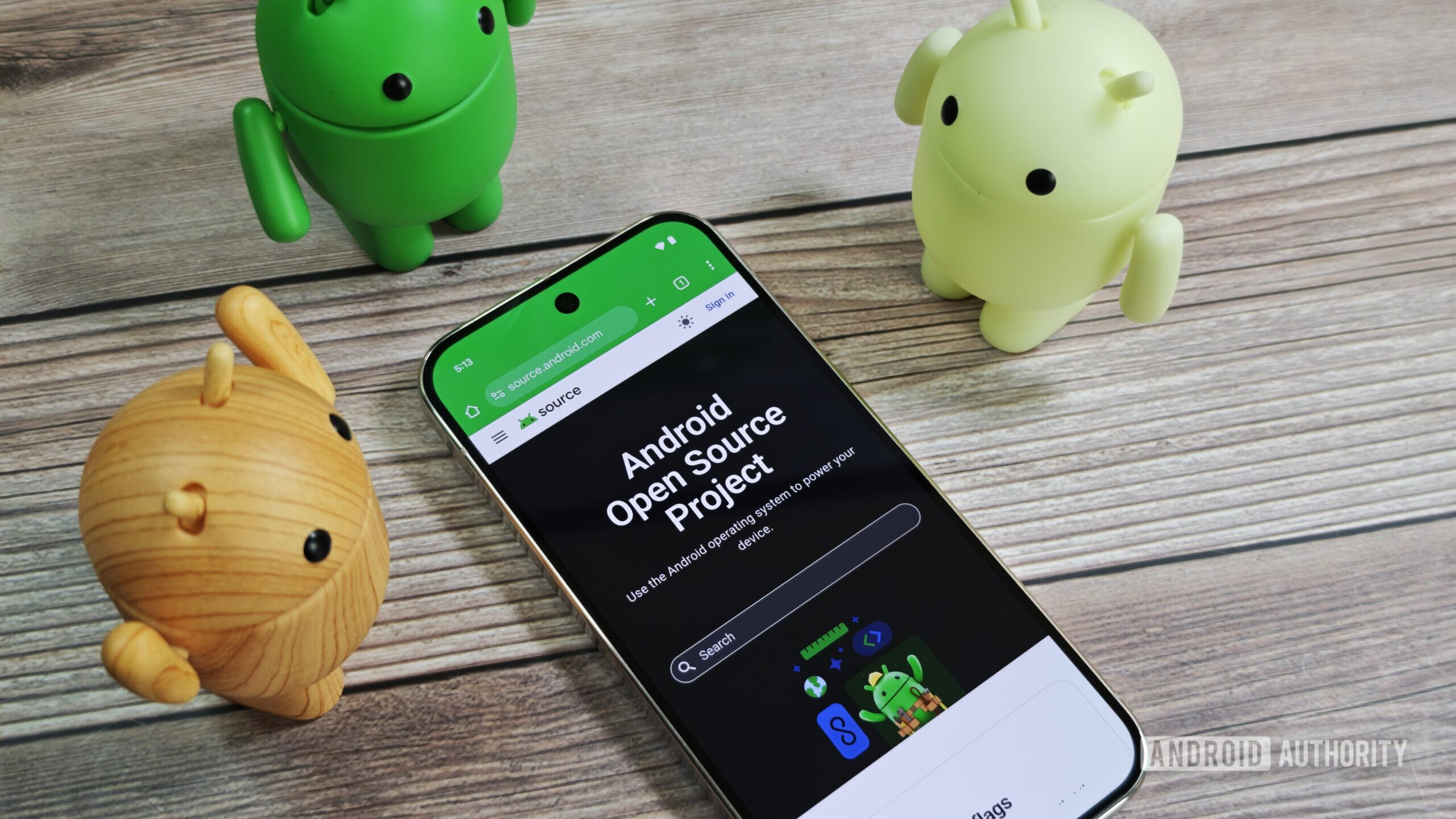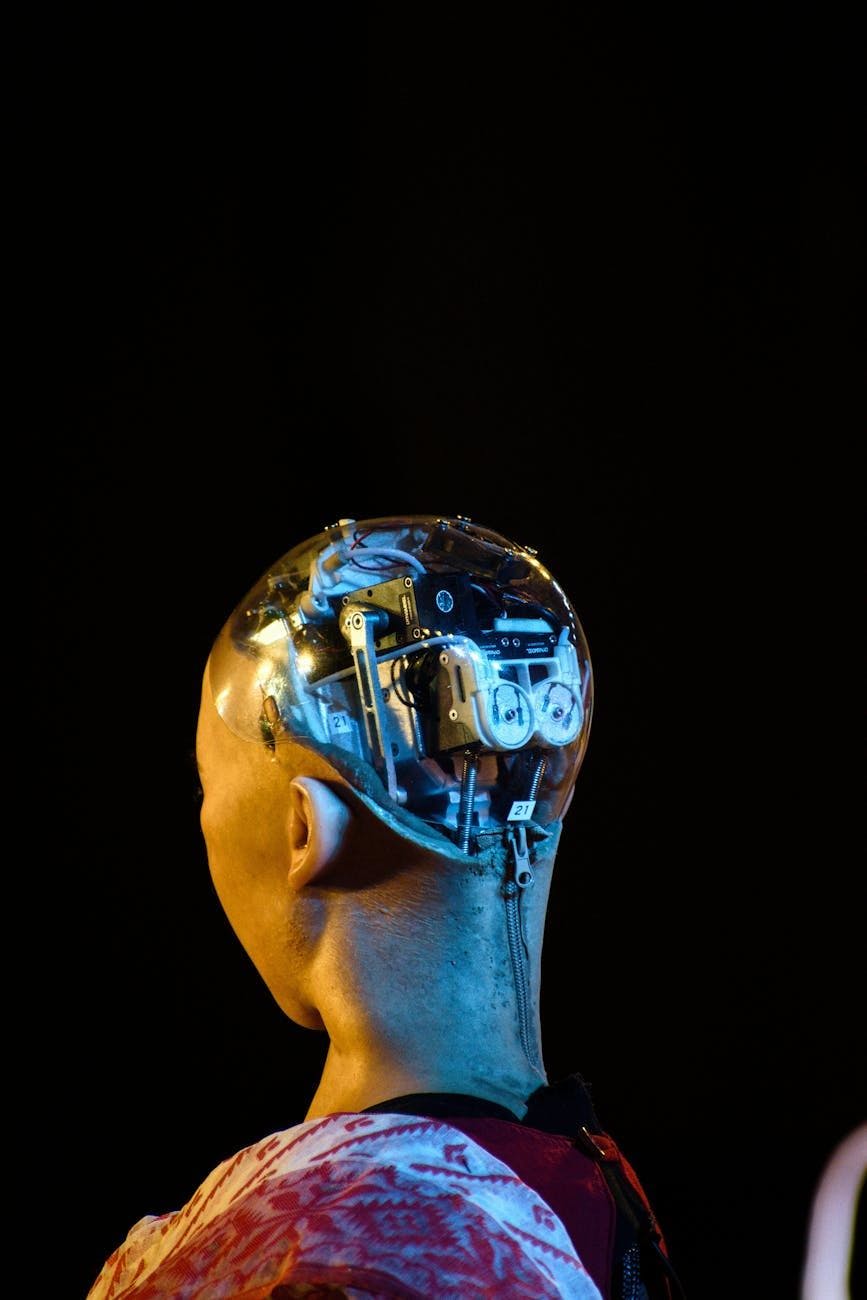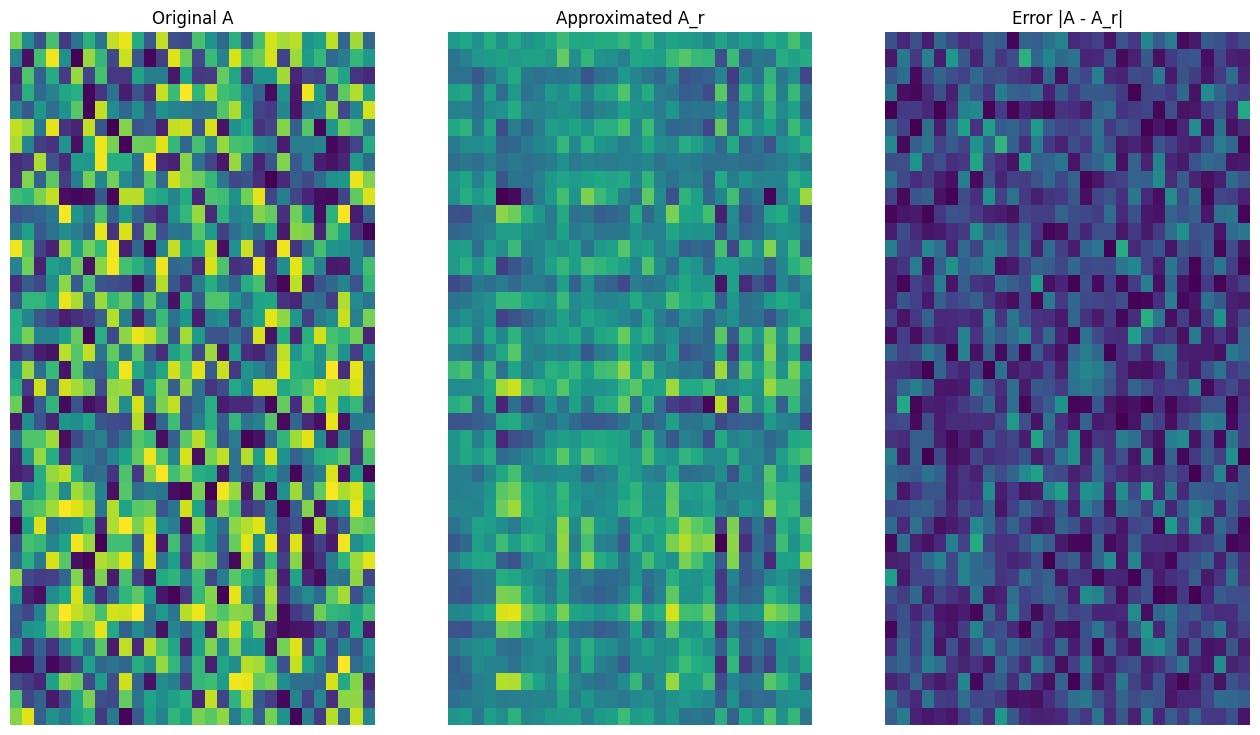You’ve heard it before: “Deliver a personalized shopping experience, and the customers will come.”
But when generic recommendations, robotic chatbots, and bland product descriptions are the norm, how do you actually stand out?
Generative AI in e-commerce changes the game. Think AI-powered product descriptions that actually sell, chatbots that don’t sound like they were programmed in 2010, and recommendations that feel eerily spot-on.
Let’s break down the best use cases with real-world examples to show how it’s making a difference. Plus, we’ll see how ’s AI-powered features make content creation and automation seamless. 🛒
Generative AI in E-commerce: Use Cases & Examples
⏰ 60-Second Summary
E-commerce is entering its AI-powered era—and it’s a game changer.
From eerily accurate product recommendations to virtual makeup try-ons and AI chatbots that actually make sense, generative AI is reshaping how we shop online.
This blog breaks down how brands like Amazon, Nike, Sephora, Walmart, and Wayfair are using AI to:
- Summarize reviews and speed up decisions
- Predict demand and optimize inventory
- Personalize shopping journeys
- Automate product content and support
But tech alone isn’t enough. You still need structure.
That’s where steps in.
As the everything app for work, connects AI tools with your workflows—helping you:
✅ Create product descriptions with Brain
✅ Forecast trends and sales
✅ Streamline launches and promos
✅ Automate tasks with natural language
With AI + , e-commerce teams save time, move faster, and grow smarter. 🛍️
E-commerce has entered a new era with generative AI leading the charge.
What Is Generative AI in E-Commerce?
Generative AI in e-commerce refers to technology that creates content, designs, and personalized experiences based on patterns and data. It learns from vast amounts of information to generate product descriptions, marketing copy, chat responses, and images that align with customer preferences.
At its core, generative AI uses natural language processing (NLP), deep learning, and user persona templates to analyze data and produce text, images, and even videos that mimic human creativity.
🧠 Fun Fact: In 1994, Phil Brandenberger made history by purchasing a Sting album, ‘Ten Summoner’s Tales,’ on NetMarket. This was the first documented online transaction using encryption to secure payment.
Key Applications of Generative AI in E-Commerce
Here’s how generative AI is being used across the e-commerce industry:
- Personalized recommendations: AI analyzes what customers browse, buy, and like, making product suggestions that feel spot-on, leading to more sales and happier shoppers
- Content creation: Generative AI or product description generators can generate content quickly, saving time while keeping things consistent and relevant
- Better customer support: Chatbots powered by AI hold meaningful conversations, offer real-time support, and make customers feel heard and valued
- Dynamic pricing: AI keeps an eye on competitor prices, demand changes, and market trends, adjusting prices in real time so businesses can stay profitable
- Visual generation: Artificial intelligence can create high-quality product images, banners, and ads that fit the brand’s style, making shopping more visually appealing
- Email and social media automation: AI tools for e-commerce help craft personalized emails and social media posts based on what customers are into, increasing conversion chances
- Tailored shopping journeys: Gen AI tailors the entire shopping experience, offering custom recommendations, deals, and content as customers move through the site, making every visit feel unique
- Dropshipping automation: AI for dropshipping streamlines order fulfillment, supplier communication, and product listing updates to keep operations running smoothly
🔍 Did You Know? Pizza Hut started offering online ordering back in 1994! Customers in select locations could place orders through their PizzaNet service.
Real-World Examples of Generative AI in E-commerce
Online shopping keeps getting faster and smarter, but that’s not happening by accident. 50% of CEOs have already built AI into their digital products, using it to fine-tune everything from pricing to customer interactions.
Let’s take a look at what that looks like in e-commerce. 🤖
1. Amazon’s review summaries
Amazon uses generative AI to condense customer reviews into a single, easy-to-read summary, capturing both positive and negative feedback in one place.
When shoppers browse a product, they no longer have to go through hundreds of individual reviews to understand common opinions. Maybe the quality’s great, but the sizing runs small—AI picks up on those patterns and lays them out for the customer.
With less friction in the buying journey, customers feel more confident in their choices, leading to fewer returns and more satisfied shoppers. And since clear, helpful information leads to quicker purchases, Amazon improves the shopping experience while driving more sales.
📌 What works: Prioritizing common themes, filtering irrelevant reviews, and structuring insights to match how shoppers assess products.
⚠️ Watch out for: Summaries might overlook unique but significant feedback or emphasize majority views, potentially misrepresenting the product.
🔍 Did You Know? Jeff Bezos launched Amazon in 1995 as an online bookstore. The first book sold was Douglas Hofstadter’s Fluid Concepts and Creative Analogies.
2. Target’s inventory management
Target’s AI analyzes shopping trends, social media buzz, and purchase patterns to stay ahead of demand. When interest in a product picks up, the system responds immediately, adjusting inventory to match demand. That means fewer empty shelves, less wasted stock, and a better shopping experience.
AI also helps catch and fix inventory mistakes by spotting patterns in the data. This means fewer surprise stockouts and more accurate tracking of what’s available.
📌 What works: Predicting demand based on real-time data, adjusting inventory before shortages occur, and balancing stock levels to avoid over- or under-supply.
⚠️ Watch out for: Forecasts may falter if trends change abruptly, risking inventory misalignment.
3. Walmart’s demand forecasting
Walmart uses AI for sales data analysis, which includes seasonal trends and external factors like weather or holidays to predict customer demand. The system generates accurate forecasts, helping the retailer adjust inventory proactively.
If a winter storm is coming, the system anticipates a surge in demand for heaters and blankets, making sure shelves stay stocked.
Additionally, Walmart uses AI to build ‘digital twins’—virtual versions of its stores and distribution centers. These models let the company test different layouts, stocking strategies, and operational tweaks before making changes in the real world.
📌 What works: Predicting demand using external factors, keeping inventory balanced, and building customer trust by ensuring product availability.
⚠️ Watch out for: Inaccurate predictions from unexpected events could disrupt supply chain planning.
4. Alibaba’s virtual customer service
Alibaba’s AI-powered virtual assistants handle millions of customer inquiries daily, answering questions about shipping, returns, and product details in seconds. A shopper checking on an order receives an immediate update, eliminating long wait times and keeping the experience hassle-free.
These chatbots provide consistent, high-quality support, even during peak shopping events, ensuring that customer service remains responsive at any scale. With AI managing routine inquiries, human agents focus on more complex issues that require personal attention.
📌 What works: Delivering fast, reliable support at scale, reducing response times, and allowing human agents to handle more nuanced customer needs.
⚠️ Watch out for: Misinterpreted queries with AI in customer service could lead to incorrect responses, frustrating customers if not addressed promptly.
🧠 Fun Fact: The first item ever sold on eBay in 1995 was a broken laser pointer. The seller, Pierre Omidyar (eBay’s founder), was shocked when a collector paid $14.83 for it.
5. Nike’s custom design assistance
Nike’s Nike By You makes sneaker customization effortless by blending AI-driven suggestions with personal creativity.
When you select preferences such as ‘bold’ and ‘blue,’ the platform presents various sneaker designs featuring different shades, textures, and sole styles. From there, you can refine the details, swap out materials, or add personal elements like initials, lucky numbers, or short messages for a signature touch.
Nike enhances the experience with expert-backed tips and how-to videos that guide users through the customization process. The AI ensures the journey is seamless, but the final design remains entirely in the hands of the customer, making each pair a reflection of individual style.
📌 What works: Streamlining customization through an intuitive interface and increasing purchase likelihood by offering personalized design options.
⚠️ Watch out for: Limited variation in suggestions might frustrate users seeking highly specific or unconventional designs.
6. Zalando’s fashion assistant
Zalando, a European fashion retailer, enhances the shopping experience through an innovative virtual styling tool powered by a large language model (LLM). This intelligent system creates personalized outfit recommendations by analyzing and combining items from Zalando’s extensive catalog.
The process is remarkably straightforward for customers. For instance, when you indicate a preference for ‘casual’ attire in ‘neutral tones,’ the tool might suggest a perfectly paired beige sweater with complementary jeans.
This approach transforms the traditional online shopping journey into something more akin to working with a personal stylist. The AI considers factors like seasonal trends, complementary colors, and proportions to create cohesive outfits rather than just suggesting individual items.
Beyond improving customer satisfaction, this AI-driven styling solution promotes client acquisition and helps customers discover items they might not have found on their own.
📌 What works: Leveraging generative AI in styling drives full outfit purchases, enhances personalization, and improves shopper engagement.
⚠️ Watch out for: Misaligned style preferences could result in irrelevant suggestions, which may disappoint users.
🧠 Fun Fact: PayPal became popular in the early 2000s because eBay sellers needed an easier way to accept payments online. It later became the dominant online payment service.
7. Wayfair’s room design visualizer
Wayfair’s Decorify visualizer tool uses generative artificial intelligence to transform how customers design their homes. Simply upload a room photo, share your style preferences, and watch as the AI creates realistic layouts featuring Wayfair products—like seeing that modern sofa in your actual living room.
This clever tool helps shoppers visualize purchases in their own spaces, which builds buying confidence and reduces returns. Decorify generates photorealistic images across various design aesthetics, from minimalist to bohemian, with direct links to purchase the suggested items.
The platform prioritizes accessibility, functioning smoothly on both desktop and mobile devices without requiring any additional downloads or applications.
📌 What works: Generating realistic room visualizations, increasing buyer confidence, and reducing returns through AI-powered design recommendations.
⚠️ Watch out for: Inaccurate room rendering or product scaling might confuse customers, undermining trust.
🔍 Did You Know? Retail e-commerce sales are projected to surpass $4.3 trillion globally, with continuous growth expected in the coming years as online shopping expands and consumer preferences evolve.
8. Sephora’s virtual artist
Sephora’s Virtual Artist tool uses generative AI to make beauty shopping feel personal and effortless. Upload a selfie, and the AI scans your skin tone and facial features to find the best product matches from Sephora’s huge selection.
Struggling to find the right foundation? The AI picks a shade that matches your undertone. Looking for a lipstick that flatters your complexion? It suggests colors that work perfectly. With the Virtual Try-On feature, you can test eyeshadows, lip colors, and even false lashes on your own photo before making a decision.
This tool also provides step-by-step tutorials customized to your features. Want to master contouring or get a sharper lip line? The AI guides you through each step with tips designed for your face.
📌 What works: Analyzing skin tones for accurate shade recommendations, personalizing the shopping experience, and increasing confidence in online beauty purchases.
⚠️ Watch out for: Lighting or photo quality issues could skew results, leading to unsuitable recommendations.
Running a successful e-commerce business means juggling everything from product listings to customer engagement. Generative AI can take some of that weight off your shoulders.
Here are a few tools to make your workflow smoother and more efficient:
- Shopify Magic: Automatically generates product descriptions and email responses tailored to customer inquiries
- Grammarly: Ensures polished, on-brand content with AI-powered grammar, tone, and clarity suggestions
- Midjourney: Produces high-quality AI-generated images for product listings, ads, and social media campaigns
While these AI tools tackle specific tasks like content creation and analytics, e-commerce businesses need a workspace that brings everything together: AI, projects, automation, and real-time collaboration. That’s .
It’s the everything app for work that combines project management, knowledge management, and chat—all powered by AI that helps you work faster and smarter.
At the core of its AI capabilities is Brain, an intelligent assistant that transforms how you work. It automates repetitive tasks, provides predictive insights, and generates content tailored to your needs in a unified workspace.
Let’s explore how it supports e-commerce professionals. 🛍️
Create content without starting from scratch

Product descriptions, email campaigns, and ad copy are essential for e-commerce, but writing them from the ground up slows teams down. Brain speeds up content creation while maintaining brand consistency.
For instance, a home décor brand launching a new collection can use the AI writing tool to draft SEO-friendly product descriptions highlighting key features.
📌 Example prompt: Generate a detailed product description for a handcrafted wooden coffee table. Include dimensions, materials, and care instructions while maintaining a warm and inviting tone.
The AI-generated text gives the team a solid starting point, allowing them to refine messaging rather than write from scratch.
🔍 Did You Know? There are approximately 28 million e-commerce sites worldwide with thousands of new stores launching daily. The United States accounts for half of all e-commerce websites, making it a major player in the online retail space. Shopify and Wix lead the market, powering 29% and 20% of online stores, respectively.
Keep workflows running smoothly


Managing an e-commerce store involves constant coordination—tracking shipments, updating inventory, and planning marketing campaigns. Brain organizes tasks, sets priorities, and suggests timelines so nothing gets missed.
Let’s say a beauty brand runs limited-time promotions.
Brain can generate a step-by-step campaign checklist, assigning tasks to the design team for banner creation, the content team for ad copy, and the logistics team for stock adjustments. The AI suggests deadlines based on past campaign timelines, helping the team stay ahead.
Stay ahead with predictive analysis


Understanding sales trends and customer behavior helps businesses plan smarter. Brain analyzes past data to predict future demand, making inventory planning more precise.
For example, an outdoor gear retailer preparing for summer sales can use the assistant to analyze last year’s bestsellers. The AI assistant highlights trending products and suggests adjusting stock levels accordingly.
📌 Example prompt: Analyze past sales data for hiking gear from May to August. Identify top-selling products and predict expected demand for the upcoming season.
Make smarter, data-driven decisions


E-commerce businesses thrive on data like customer reviews, sales figures, and website traffic. Brain turns this raw data into actionable insights, helping teams optimize pricing, promotions, and inventory.
Suppose a pet supply store notices a drop in repeat purchases.
Brain can analyze customer feedback and order history, revealing that customers love a specific product but dislike its packaging. The team can use the response to adjust their approach and improve retention.
⚙️ Bonus: also offers CRM templates tailored for e-commerce, helping you track customer interactions, manage order inquiries, and oversee loyalty programs effortlessly.
Automate repetitive tasks effortlessly


Automation makes it easy to streamline repetitive work. You can set up triggers and actions to keep things moving without constant oversight. For example, when a task moves to ‘In Progress,’ can automatically assign it to the right team member and set a due date.
Building on this, Brain introduces AI-driven customization, enabling users to create complex Automations using plain language. Just describe what you want, and it’ll be set up instantly.
Let’s say you run an online store and want to speed up order processing. You can type: When an order status changes to ‘Ready to Ship,’ notify the fulfillment team, generate a tracking link, and send the shipping confirmation to the customer.
The AI workflow automation is built for you, keeping everything moving.
📮 Insight: Our research shows that AI is now a natural part of daily life. Around 88% of people use AI-powered tools in some way, and more than half rely on them multiple times a day.
’s AI assistant helps e-commerce businesses keep up by speeding up product descriptions, managing workflows, and handling repetitive tasks.
Less busywork, more time to grow.
Challenges & Ethical Considerations of AI in E-commerce
AI makes e-commerce faster and smarter, but it also raises challenges that businesses can’t ignore. These include:
- Bias in recommendations: AI learns from past data, which means it can reinforce biases in product suggestions, pricing, and ads, limiting choices for customers
- Data privacy concerns: AI-powered personalization relies on customer data, making it crucial to have clear policies on data collection, storage, and security
- Lack of human oversight: Automating everything, from customer support to inventory updates, can lead to errors that go unnoticed without human review
- Intellectual property risks: AI-generated product descriptions and ad copy raise questions about originality, ownership, and copyright protection
- Fraud and scams: Fake reviews, deepfake ads, and AI-powered scams are becoming harder to detect, making it essential for businesses to prioritize fraud detection measures
Tackling these challenges starts with transparency and control. Setting clear data policies, monitoring AI decisions, and maintaining human oversight in key areas can prevent bias, protect privacy, and maintain trust.
Generative artificial intelligence should complement human input, enhancing decision-making and ensuring automation benefits both businesses and customers.
🔍 Did You Know? A Deloitte report reveals that nearly all organizations achieve measurable ROI from their most advanced generative AI initiatives, with 20% seeing returns exceeding 30%. Additionally, 74% say AI meets or surpasses expectations, while 67% report at least moderate integration into broader workflows, underscoring AI’s expanding role in business.
Less Prompting, More Doing—
E-commerce is moving faster than ever with generative AI driving the pace. Product suggestions feel more relevant, support feels more human, and content flows without bottlenecks.
But speed without structure can still leave teams scrambling.
That’s where makes the difference. It gives e-commerce teams a central space to organize product launches, automate marketing workflows, and generate AI-powered content—all without jumping across tools.
Brain helps write product descriptions, forecast trends, and surface insights from customer data. Meanwhile, Automation keeps order tracking, email follow-ups, and campaign launches running in the background.
Why wait? Sign up for today! ✅


Everything you need to stay organized and get work done.














